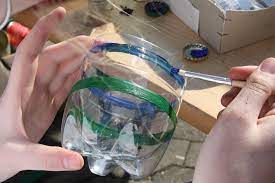Introduction
In a world grappling with environmental challenges, upcycling has emerged as a creative and sustainable solution. Unlike recycling, which involves breaking down materials to create new ones, upcycling transforms discarded items into something new and valuable without compromising their original form. This article delves into the art of upcycling, showcasing its benefits, providing practical tips, and inspiring you to turn trash into treasure.
Understanding Upcycling
Upcycling is the process of repurposing discarded or unwanted materials, giving them a new lease on life. Unlike traditional recycling, which consumes energy and resources, upcycling reduces waste and promotes resourcefulness. By upcycling, you not only divert items from landfills but also tap into your creativity to transform them into functional and aesthetically pleasing objects.
The Benefits of Upcycling
Environmental Impact: Upcycling reduces the demand for new raw materials and saves energy that would otherwise be required for recycling or manufacturing. By repurposing existing items, you contribute to waste reduction and carbon footprint reduction.
Creative Outlet: Upcycling encourages creativity and allows you to express your unique style. It challenges you to think outside the box and find innovative ways to give new life to discarded materials.
Cost Savings: Upcycling can save you money. Instead of purchasing new items, you can repurpose and transform what you already have or find in thrift stores or flea markets. This can be particularly beneficial when upcycling furniture or home decor.
Practical Upcycling Ideas
Furniture Upcycling: Give old furniture a fresh look by sanding, painting, or reupholstering it. Turn an outdated dresser into a stylish storage unit or transform wooden pallets into a trendy coffee table.
Clothing Redesign: Revamp your wardrobe by upcycling old garments. Turn jeans into shorts, add patches or embroidery to plain shirts, or transform a t-shirt into a tote bag. Let your imagination run wild and create unique, one-of-a-kind pieces.
Repurposed Containers: Transform empty jars, bottles, or cans into stylish storage containers or decorative pieces. Paint them, add labels, or repurpose them as candle holders or vases.
Garden Upcycling: Give new life to discarded items in your garden. Convert old tires into planters, repurpose wooden pallets as herb gardens, or create a vertical garden using old ladders or shoe organizers.
Tips for Successful Upcycling
Imagination and Inspiration: Let your imagination guide you when upcycling. Look for inspiration in magazines, online platforms, or nature itself. Experiment with different materials and techniques to create unique and personalized pieces.
Quality and Durability: Ensure that the materials you use for upcycling are of good quality and can withstand the intended purpose. Take time to reinforce, repair, or replace any weak or damaged parts to ensure durability.
Tools and Safety: Use appropriate tools and equipment for the upcycling process. Wear protective gear, such as gloves or goggles, when necessary. Follow safety guidelines to avoid accidents and injuries.
Collaboration and Community: Join upcycling communities or workshops to learn from others and share your own experiences. Collaborate with like-minded individuals to exchange materials, ideas, and inspiration.
Upcycling as a Lifestyle Choice
Embracing upcycling as a lifestyle choice goes beyond individual projects—it becomes a mindset and a way of living. Here are some ways you can incorporate upcycling into your daily life:
Conscious Consumption: Before making a purchase, consider if there is a way to upcycle or repurpose something you already own or find second-hand. By reducing the demand for new products, you contribute to a more sustainable and circular economy.
DIY Culture: Cultivate a do-it-yourself (DIY) culture by learning new skills and techniques. From basic sewing and woodworking to more advanced crafts, acquiring these skills empowers you to upcycle and create unique pieces tailored to your taste.
Teaching Future Generations: Instill the value of upcycling in younger generations by involving children in upcycling projects. Encourage their creativity and teach them the importance of resourcefulness and waste reduction.
Spreading Awareness: Share your upcycling journey through social media, blogs, or local community events. Inspire others to embrace upcycling by showcasing your projects, offering tips, and highlighting the environmental benefits.
By adopting upcycling as a lifestyle, you can make a significant impact on the environment while enjoying the satisfaction of creating something truly unique. Embrace the challenge and joy of turning everyday objects into extraordinary treasures, and inspire others to join this sustainable movement. Together, we can redefine our relationship with waste and foster a more conscious and creative society.
Conclusion
Upcycling is a powerful way to make a positive impact on the environment while embracing your creativity. By seeing the hidden potential in discarded items, you can transform them into something useful and beautiful. By upcycling, you contribute to waste reduction, conserve resources, and inspire others to follow suit. So, gather your tools, let your imagination soar, and embark on a journey of turning trash into treasure. Each upcycled creation is a small step towards a more sustainable and mindful future. Embrace the art of upcycling and discover the joy of giving new life to forgotten objects.
